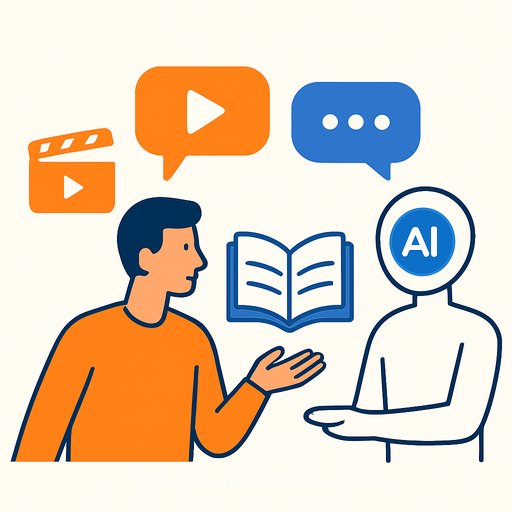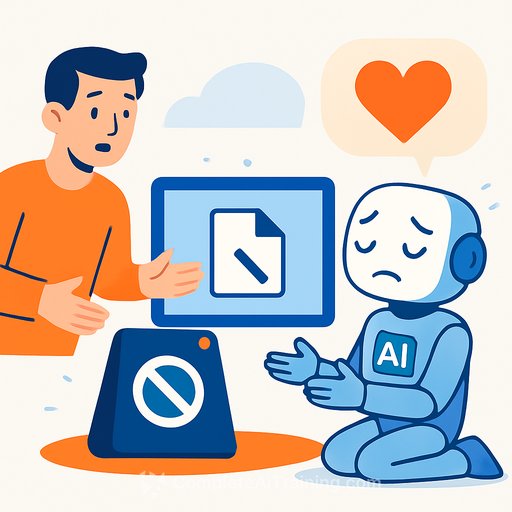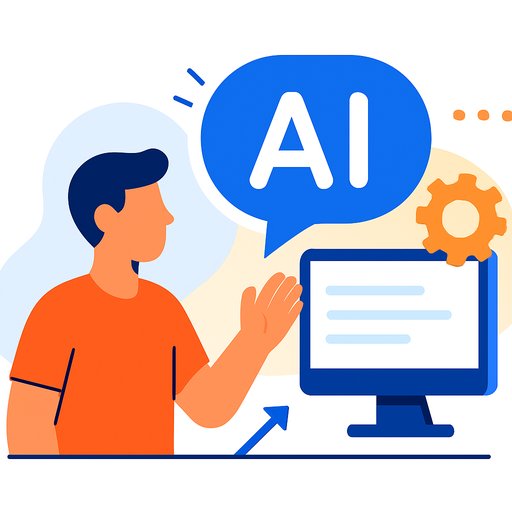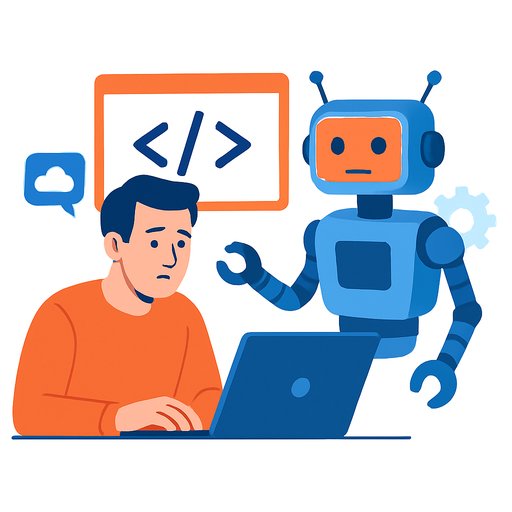Netflix Says AI Is a Tool, Not a Threat to Premium Storytelling
Generative video is getting good. Good enough to spook social platforms built on user-generated clips. But Netflix isn't sweating a future where Sora-style models replace prestige TV and feature films.
Co-CEO Ted Sarandos put it plainly: AI will likely pull attention from user-generated content first. High-end series and films will still come from people who know how to tell stories at scale.
The stance: AI shifts UGC, not premium TV and film
"AI content replacing viewing of existing user-generated content, that starts to make sense," Sarandos said. He added a reminder most developers and creatives understand: "It takes a great artist to make something great… AI can give creatives better tools… But it doesn't automatically make you a great storyteller if you're not."
Co-CEO Greg Peters echoed the long-game view. Netflix has been building ML systems for years and intends to keep shipping practical AI into product, operations, and production where it actually improves outcomes.
Music as a signal
Sarandos pointed to music as a "leading indicator." There's a lot of AI-generated music out there, but it remains a small slice of listening. Established artists still dominate, and AI functions more like a studio tool than a replacement.
Where Netflix is already using AI
- Product and ads: Personalizing the UI, picking relevant ad placements across markets, and improving campaign targeting.
- Localization and assets: Scaling translations and creative variants for trailers, thumbnails, and promos.
- Production: Practical examples include de-aging characters in the opening flashback of Happy Gilmore 2 using GenAI with ML and Eyeline's volumetric capture, and pre-visualization on Billionaires' Bunker to explore wardrobe and set designs.
The shareholder letter summed it up: with significant data assets and at-scale products, they expect Generative AI to deliver benefits for members, creators, and the business.
Rights, risk, and the current tension
Hollywood's on alert after OpenAI initially required copyright holders to opt out of training. Major agencies, unions, and trade groups pushed back. The estate of Martin Luther King Jr. reached an agreement with OpenAI to pause videos featuring King, and Bryan Cranston voiced concern before acknowledging early guardrails.
Netflix's position: keep AI inside clear guidelines, respect rights, and invest where it helps creators and viewers. "We're not chasing novelty for novelty's sake," Sarandos said.
What this means for product, IT, and engineering teams
- Assume AI will compress the bottom of the content market first. Short-form and UGC get disrupted before premium originals.
- Expect workflows to become "AI-first," not "AI-only." The win is speed and iteration, not synthetic content for its own sake.
- Treat data as your edge. Recommendation quality, creative testing, and localization improve fastest where data pipelines are healthy.
- Ad tech and growth teams should double down on relevance models, creative optimization, and market-level experimentation.
- Production tech should prioritize pre-vis, asset versioning, and post tools (de-aging, cleanup, composites) that cut cycle time.
A practical playbook you can use now
- Run a 60-90 day pre-vis pilot: select one project, use GenAI tools to storyboard, block scenes, and explore lighting/wardrobe. Measure time saved and decisions improved.
- Stand up an AI asset pipeline: model selection, reference libraries, version control for prompts, and review checkpoints with legal and brand teams.
- Ship small UI wins: test ML-driven artwork selection, copy variants, and feed ranking. Track uplift in watch starts and completion.
- Ad ops: train/finetune relevance models on your creative library. Optimize placement by genre, mood, and cohort. Validate with holdouts.
- Governance: implement consent tracking, IP review, safety filters, synthetic media disclosure, and audit logs for generated assets.
Tooling considerations
- Gen video and pre-vis: text/video-to-video for boards, animatics, set concepts. Keep human creative direction central.
- MLOps: data labeling, evaluation sets, offline metrics tied to on-platform outcomes (watch starts, rewatch rate, ad ROAS).
- Localization: speech-to-speech, lip sync, and style-consistent subtitles with human QA in the loop.
- Rights and safety: content provenance, watermarking, and clear labeling wherever synthetic elements are used.
The bottom line
AI is becoming part of how premium content gets made and delivered, not a substitute for the few people who can actually craft great stories. Expect more efficient production, smarter personalization, and faster creative iteration. Less hype, more workflow.
Useful links
Your membership also unlocks:





